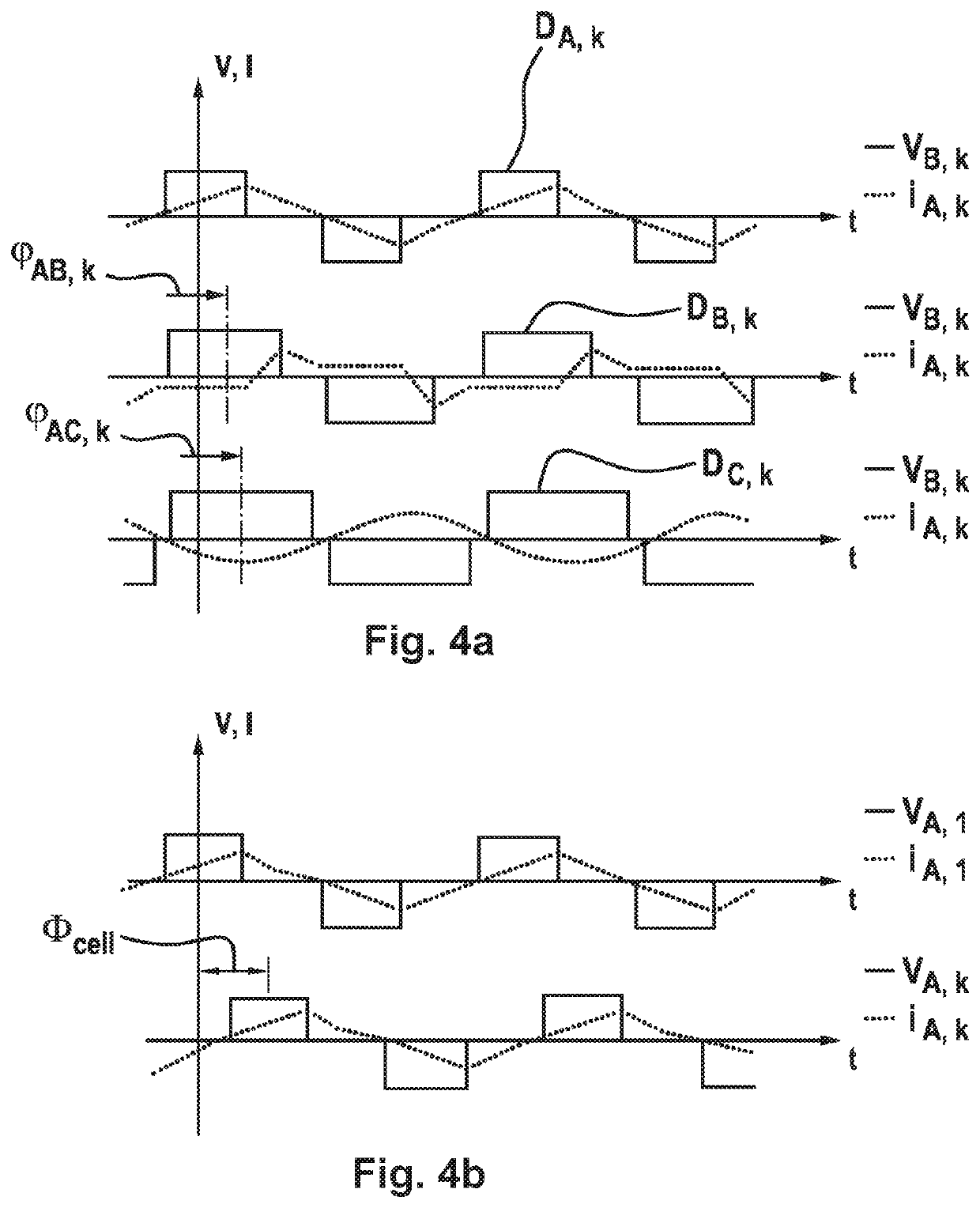Isolated DC/DC converter for controlling power flows between three DC terminals
a dc/dc converter and terminal technology, applied in the field of power electronics, can solve the problems of increased production costs, low power density, poor overall efficiency of the system, etc., and achieve the effect of preventing destabilization of the entire converter, reducing the port voltage, and no destabilization of the converter results
- Summary
- Abstract
- Description
- Claims
- Application Information
AI Technical Summary
Benefits of technology
Problems solved by technology
Method used
Image
Examples
Embodiment Construction
[0044]The presented multi-port multi-cell topology of a converter K makes omnidirectional power flow possible between three DC-isolated DC voltage sources. Said topology preferably consists of a plurality of identical three-port cells Z1,2,n, which are interconnected either in series or in parallel depending on the level of the applied port voltages of the overall system. FIG. 1 shows the converter K having a plurality of cells Z1,2,n. The converter K has three terminals A, B and C, wherein terminal A is associated with an electricity system QAC, terminal B is associated with a high-voltage system QHV and terminal C is associated with a low-voltage system QNV.
[0045]Each cell consists of three full-bridges VB and a transformer T having three windings—Wx,A, Wx,B, Wx,C or transformer coils and three cell terminals ZAx,A, ZAx,B and ZAx,C. In this case, the first index “x” stands for the number of the respective converter cell and the second index “A, B, C” stands for the individual term...
PUM
 Login to View More
Login to View More Abstract
Description
Claims
Application Information
 Login to View More
Login to View More - R&D
- Intellectual Property
- Life Sciences
- Materials
- Tech Scout
- Unparalleled Data Quality
- Higher Quality Content
- 60% Fewer Hallucinations
Browse by: Latest US Patents, China's latest patents, Technical Efficacy Thesaurus, Application Domain, Technology Topic, Popular Technical Reports.
© 2025 PatSnap. All rights reserved.Legal|Privacy policy|Modern Slavery Act Transparency Statement|Sitemap|About US| Contact US: help@patsnap.com



